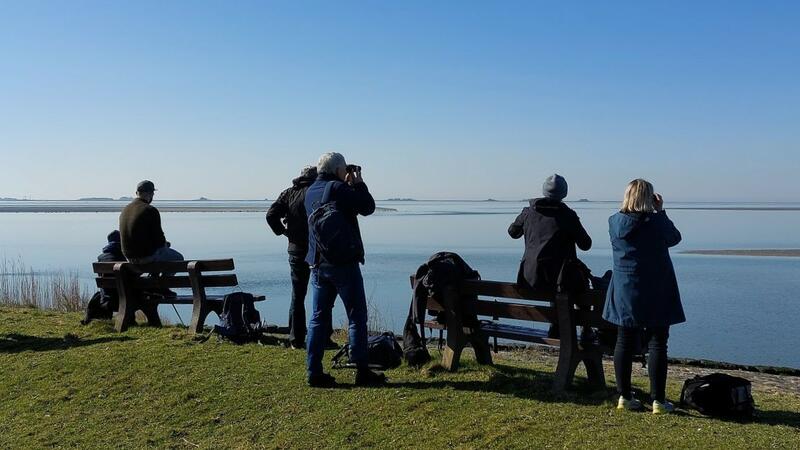Experts discuss how flyway conservation can contribute to UN 30x30 goal

In April, 20 conservation experts from the Netherlands, Germany, Denmark, the UK, Norway, and Ukraine met on the Hallig Langeness for the 3rd East Atlantic Flyway Seminar. The event primarily focused on the 30×30 target of the Global Biodiversity Framework, which aims to ensure that at least 30% of terrestrial and marine areas are effectively conserved and managed by 2030. By protecting biodiversity across international borders flyway conservation can significantly contribute to this goal. The seminar was organised by Peter Prokosch, active player in the conservation of the Wadden Sea for the past decades.
The participants discussed successful conservation efforts taken in the last decades as well as new initiatives and their potential in advancing the conservation of migratory waterbirds and their wetland habitats. A common conclusion was that collaborative efforts and innovative conservation strategies are needed to ensure the long-term survival and well-being of migratory birds along the East Atlantic Flyway.
During their annual cycle, migratory waterbirds depend on a network of sites from the Arctic to Africa. These breeding, stopover, and wintering sites are increasingly threatened by habitat loss, climate change, and human development. The identification, protection and restoration of critical wetland sites along the East Atlantic Flyway helps to protect the ecological connectivity and hence integrity of the flyway, which is essential for maintaining healthy bird populations. As a partner initiative, the Wadden Sea Flyway Initiative provides opportunities to strengthen collaboration among governments, NGOs, scientists, local communities, and international organizations. By working together, we can safeguard migratory birds throughout their entire range – now and for future generations.
More information on the seminar can be found here.
